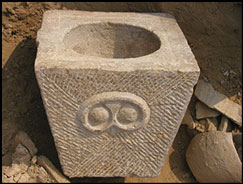Crossref Citations
This article has been cited by the following publications. This list is generated based on data provided by
Crossref.
Qin, Zhen
Storozum, Michael
Liu, Haiwang
Zhang, Xiaohu
and
Kidder, Tristram R.
2019.
Investigating environmental changes as the driving force of agricultural intensification in the lower reaches of the Yellow River: A case study at the Sanyangzhuang site.
Quaternary International,
Vol. 521,
Issue. ,
p.
25.
Jing, Yuan
Campbell, Roderick
Castellano, Lorenzo
and
Xianglong, Chen
2020.
Subsistence and persistence: agriculture in the Central Plains of China through the Neolithic to Bronze Age transition.
Antiquity,
Vol. 94,
Issue. 376,
p.
900.
Hsieh, Shannon
Ninard, Krzysztof
Uchman, Alfred
Łaska, Weronika
and
Łapcik, Piotr
2023.
Mammal tracks record anthropogenic environmental influence in late-Holocene inland dunes of the European Sand Belt, Poland.
The Holocene,
Vol. 33,
Issue. 1,
p.
61.
Yang, Ru-Xi
and
Wei, Wen-Bin
2024.
The shape and application of moldboards during the Han dynasty: 3D modelling an excavated plow from Shanxi, China.
Journal of Archaeological Science: Reports,
Vol. 58,
Issue. ,
p.
104656.
Tao, Dawei
Zou, Huilin
Chen, Qinlong
Zhang, Guowen
and
Guo, Yongqi
2024.
Staple food and possible famine food in Han Dynasty Guanzhong: Archeobotanical and stable isotopic perspectives.
Archaeometry,
Vol. 66,
Issue. 3,
p.
683.
Festa, Marcella
Wu, Miao
Qin, Gaomin
Qiao, Batong
Wang, Wei
Xian, Yiheng
Monteith, Francesca
and
Yu, Chun
2024.
Animal use in Han dynasty cities: Zooarchaeological evidence from Yishengci, Nanyang (China).
Archaeological Research in Asia,
Vol. 38,
Issue. ,
p.
100514.
